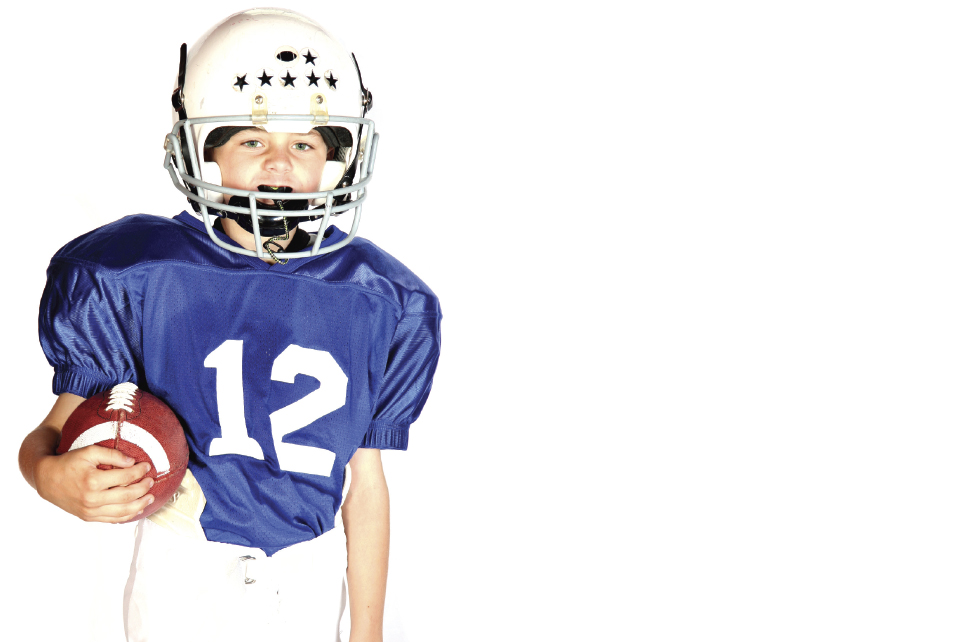The More the Better: Why Your Kid Shouldn't Specialize in One Sport

Across America, 30 to 45 million children between the ages of 6 and 18 are participating in organized sports. The benefits of being active and participating in athletics are well-documented, but unfortunately, the increase in participation in sports also correlates to more injuries. While it’s great that parents are urging their children to participate in some form of sports, there is more that can be done to prevent sport-related injuries.
It is estimated that up to 50 percent of all youth injuries are the result of overuse and constant levels of stress without adequate recovery time. Early sport specialization is a large causative factor for these types of injuries. Sport specialization is defined as intense, year-round training (greater than eight months out of the year) for a single sport, at the exclusion of other sports and activities. Research shows that sport specialized youth can be at a four times' higher risk of sustaining a serious overuse injury. Additionally, being involved in only one sport does not allow your child to develop comprehensive, complex motor patterns, and appropriate neuromuscular adaptations; this also doesn't help them truly improve their overall athletic performance. Aside from all the physical detriments early sport specialization has, research also shows that these athletes mentally burn out quicker, have a harder time going back to sports after an injury occurs, and may become socially isolated.
Allowing and urging your child to be involved in more than one sport will improve their overall athletic abilities and reduce their susceptibility to overuse injuries. Now, admittedly, certain sports (as noted in the table below) require early specialization for success in regards to professional and Olympic sports. Even then, I would argue that they should have a second active hobby to reap the benefits of being involved in multiple sports, and minimize the risks associated with sport specialization. Below are further recommendations for reducing your child’s injury risk.
Protecting a child from harm is every parent’s top priority. As specialty-trained clinicians at Texas Physical Therapy Specialists, we are qualified to identify movement pattern dysfunctions and utilize appropriate functional tests to determine where their sport hasn’t developed them. With this information, our physical therapists can come up with a game plan (i.e. exercise or a strength & conditioning program) to assist in preventing injuries and improving sport performance. Our Georgetown clinic is opening a sports performance center within the clinic to meet all your athletic needs!
Recommendations: Limit ratio of organized sport hours to free play to <2:1 hours, avoid having your child participate in more hours of sport a week than their age (i.e. a 10-year-old should be involved in fewer than 10 hours of organized sports a week).
When to Specialize (if ever):

And if you're still not convinced, take it from the Houston Texans' All-Pro defensive end:
If someone encourages your child to specialize in a single sport, that person generally does not have your child's best interests in mind.
— JJ Watt (@JJWatt) March 7, 2017
References: Paterno MV, Taylor-Haas JA, Myer GD, Hewett TE. Prevention of Overuse Sports Injuries in the Young Athlete. The Orthopedic clinics of North America. 2013;44(4):553-564.
Hall R, Foss KB, Hewett TE, Myer GD. Sports Specialization is Associated with An Increased Risk of Developing Anterior Knee Pain in Adolescent Female Athletes. Journal of sport rehabilitation. 2015;24(1):31-35.
Myer GD, Jayanthi N, Difiori JP, et al. Sport Specialization, Part I: Does Early Sports Specialization Increase Negative Outcomes and Reduce the Opportunity for Success in Young Athletes? Sports Health. 2015;7(5):437-442.
Myer GD, Jayanthi N, DiFiori JP, et al. Sports Specialization, Part II: Alternative Solutions to Early Sport Specialization in Youth Athletes. Sports Health. 2016;8(1):65-73.






